 Movies and TV
Movies and TV  Movies and TV
Movies and TV  History
History 10 Things You Didn’t Know About the American National Anthem
 Technology
Technology Top 10 Everyday Tech Buzzwords That Hide a Darker Past
 Humans
Humans 10 Everyday Human Behaviors That Are Actually Survival Instincts
 Animals
Animals 10 Animals That Humiliated and Harmed Historical Leaders
 History
History 10 Most Influential Protests in Modern History
 Creepy
Creepy 10 More Representations of Death from Myth, Legend, and Folktale
 Technology
Technology 10 Scientific Breakthroughs of 2025 That’ll Change Everything
 Our World
Our World 10 Ways Icelandic Culture Makes Other Countries Look Boring
 Misconceptions
Misconceptions 10 Common Misconceptions About the Victorian Era
 Movies and TV
Movies and TV The 10 Coolest Stars to Set Sail on The Love Boat
 History
History 10 Things You Didn’t Know About the American National Anthem
 Technology
Technology Top 10 Everyday Tech Buzzwords That Hide a Darker Past
Who's Behind Listverse?

Jamie Frater
Head Editor
Jamie founded Listverse due to an insatiable desire to share fascinating, obscure, and bizarre facts. He has been a guest speaker on numerous national radio and television stations and is a five time published author.
More About Us Humans
Humans 10 Everyday Human Behaviors That Are Actually Survival Instincts
 Animals
Animals 10 Animals That Humiliated and Harmed Historical Leaders
 History
History 10 Most Influential Protests in Modern History
 Creepy
Creepy 10 More Representations of Death from Myth, Legend, and Folktale
 Technology
Technology 10 Scientific Breakthroughs of 2025 That’ll Change Everything
 Our World
Our World 10 Ways Icelandic Culture Makes Other Countries Look Boring
 Misconceptions
Misconceptions 10 Common Misconceptions About the Victorian Era
10 Crazy Things Animals Are Doing (That We Can’t Figure Out)
The animal world is generally a practical place. You have to be practical when you’re just trying to survive, after all. When you’re worried about where your next meal is coming from, whether or not your genes will survive in your young, and what’s hiding around the corner waiting to eat you, there’s usually not enough time for creativity. There are some animals, though, that scientists have found doing some pretty inexplicable stuff—some of it is downright weird.
10 Fur Seals Mating With Penguins
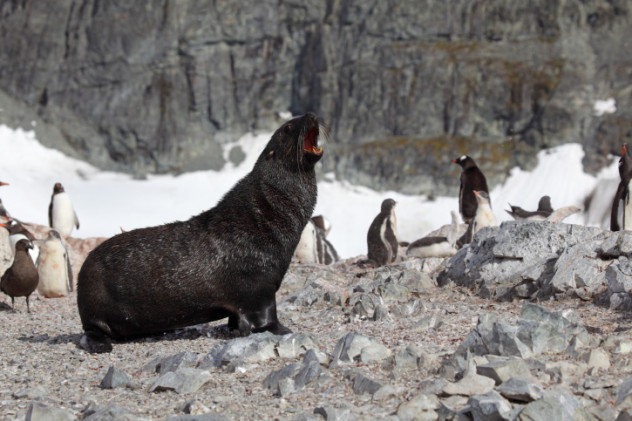
In 2006, researchers observing the native species of Marion Island in Antarctica saw something pretty baffling—a fur seal attempting to mate with a king penguin. They made note of it in their research, treating it as an independent incident. At the time, they suspected it was something rather accidental, maybe playtime gone horribly wrong, or mealtime gone horribly wrong.
But more recently, representatives of the Mammal Research Institute at the University of Pretoria, South Africa, have seen it happening again. And again. And again. It’s always brutal, and in at least one observed instance it ended with the seal killing and eating the penguin.
Before 2006, fur seals and their closely related species had never been observed trying to mate with something outside of their own classification, so it seems as though they’re learning the behavior. There has been considerable research done on the island for more than 30 years, and the sudden upstart of this behavior has scientists baffled.
There are some suggestions of what’s going on, but they’re just guesses. The lack of females on the beach might be forcing young males to focus their attention elsewhere, but the typical reasons for cross-species mating don’t seem to factor in. In some cases, cross-species sex can result in hybridized young, like mules, but that’s definitely not the case here.
9 Collective Baboon Apathy
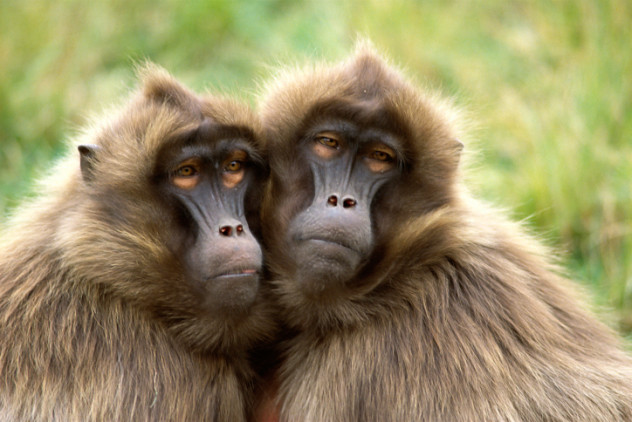
In 2013, a typically rambunctious colony of baboons at the Emmen Zoo in the Netherlands was struck by a bizarre case of mass hysteria. All their regular antics—playing, fighting, greeting their treat-bearing keepers—stopped, and they simply sat.
The odd event started with a massive burst of chaos. Then nothing. One group sat high up in a tree and refused to do anything, and the apathy spread throughout the whole colony. This wasn’t the the first time that it’s happened. In 1994, 1997, and 2007, similar occurrences of mass apathy happened in the same group of baboons. During the previous episode, they all sat motionless in their enclosure, looking off in the same direction. They didn’t eat and they didn’t socialize. They just sat. Nothing similar has happened in any other zoos, and it hasn’t been linked to a unique quality or characteristic in the dominant member of the group—the dominant member has changed between the episodes.
Slowly, the baboons came out of their trance-like state. Younger baboons started acting up again, older baboons resumed their parenting duties, and gradually, they all got hungry and started looking for food again.
There’s been a wide range of theories about just what was going on with the baboons. It could be minor, undetected earthquakes, or a random fright that might have been as simple as someone wearing a scary T-shirt. These theories have been thrown around, but none have been proven as explanations for the baboons of the Emmen Zoo to sink into their occasional funk.
8Changes In Blue Whale Songs
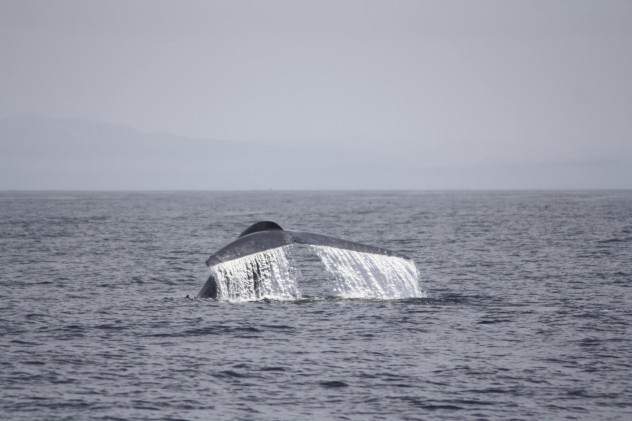
For decades, scientists have been recording the songs of the ocean’s blue whales. But there’s something strange going on—not with the song itself, but with the whales. Every year, their voices are getting deeper and deeper.
The pitch is changing by such a drastic amount that scientists making the recordings need to calibrate their equipment every year to ensure they can even pick up the songs. Recording devices switch on when they pick up a certain frequency, and that frequency is changing.
It’s happening worldwide, too. It’s not just one certain group of whales, but rather whales all over the oceans that are demonstrating singing voices that are getting deeper. Scientists first noticed the changes in pitch in the 1960s, and the songs have sunk in pitch by about 30 percent since then.
No one knows why it’s happening. Some think that it was something to do with the need to overcome competing ocean noises that have increased over the last few decades, while others think it might be in response to a change in water temperature, composition, or climate. It might have something to do with a change in the density of whale population, or in the way that they’re selecting mates. No one can say for sure.
7 Female Chickens Changing Sex
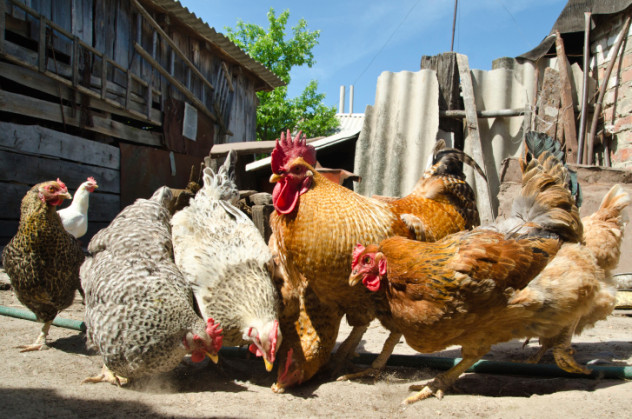
There are a few animal species that will change sexes, usually when there are no opposite-gender members of the species available. In that case, it makes sense for the survival of the group. But in the case of chicken sex changes, the process is a little different.
Female chickens can undergo natural sex changes, but only take on the mannerisms and appearance of a male bird—they’re not actually functionally male, but only adopting their secondary sex characteristics. Scientists know how this happens, but not why.
Chickens have two sex organs; in females, one develops into an ovary and one remains dormant. If something happens—anything from a hormonal imbalance to the development of a cyst—it can make the second organ grow and release male hormones.
What this means for the previously female chicken is that she’ll suddenly stop laying eggs, she’ll grow a wattle and a comb, and she’ll act like a male. She’ll start strutting and crowing, but she won’t mate with other females because she’s still genetically female.
It is known to happen, though not frequently. In 2011, chicken owners in Cambridgeshire, England, saw it happening in their own backyard when one of their hens inexplicably stopped laying eggs and started practicing her crowing. Gertie became Bertie, and while he wasn’t very good at it originally, he’s become quite the vocal semi-rooster.
6 Glow-In-The-Dark Scorpions
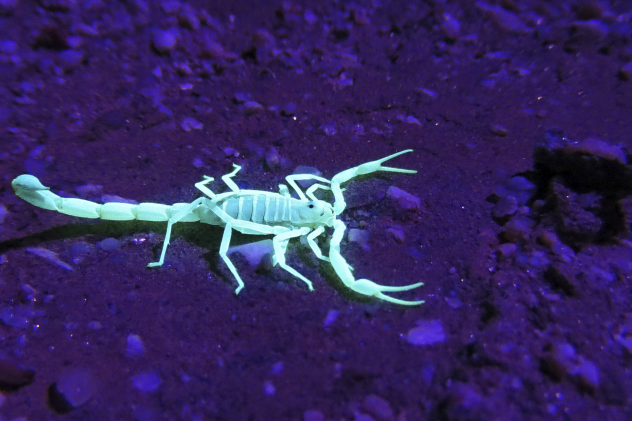
When scorpions are exposed to ultraviolet light or the strong light of the full moon, they glow. No one knows why they glow, but it’s dangerous for the scorpion.
Scorpions hunt mostly at night, the same time when their predators are out looking for a meal, too. Owls and some nocturnal rodents hunt and eat scorpions, so it seems pretty illogical that glowing in the dark would be the best choice for nighttime survival.
Part of the answer might lie in scorpion eyes, which are best suited to seeing blue-green light. It’s possible that their ability to glow in the dark evolved as a way to see each other. It’s also been suggested that they’re acting in the same way as some deep sea creatures, luring prey toward them with their bioluminescence.
A California State University researcher has put forth the idea that scorpions rely on their glowing to indicate when they’re out in the open and vulnerable. When the glowing stops, it’s suggested, they know they’re in the shadow of something that’s hiding them from moonlight and safe. The strength of their glow is indicative of whether or not others can see them.
5 Beached Dolphins And Whales
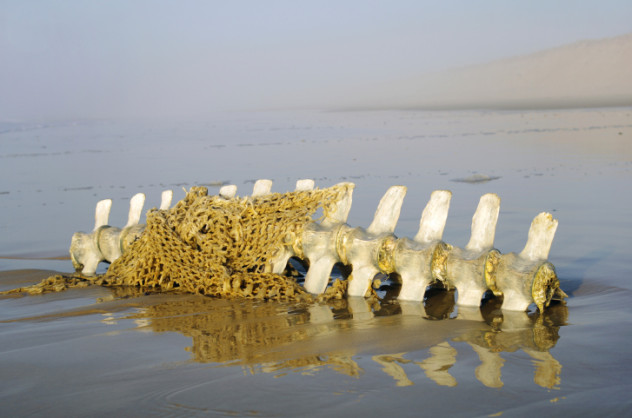
In 2009, a group of false killer whales stranded themselves on a beach in South Africa. There were 55 individuals, and rescuers attempted to help them back into the water. But as soon as the rescuers had pushed the massive creatures back into the water, they forced their way up on shore again. The beaching started in the morning, and by the afternoon, it was decided that the most humane thing to do to the whales was to euthanize them.
There are many stories about mass whale and dolphin beachings linked to military activity, sonar, underwater noise caused by shipping vessels, and even pollution. While that all might have something to do with it, the behavior dates back to well before the advent of any of these human innovations. There are records of mass beaching events in New England not long after the first European settlers arrived, and even Aristotle recorded instances of marine animals beaching themselves.
It all seems to suggest that while it might be something that’s aggravated by modern technologies like sonar, it might also be a natural behavior—and that makes no sense. It’s possible that sick animals beach themselves to die, but that doesn’t entirely explain why huge populations strand themselves all at once. The record for false killer whales, the species that was found fighting to stay on the beaches in South Africa, is 835 individual animals.
4 Rhino-Riding Genets
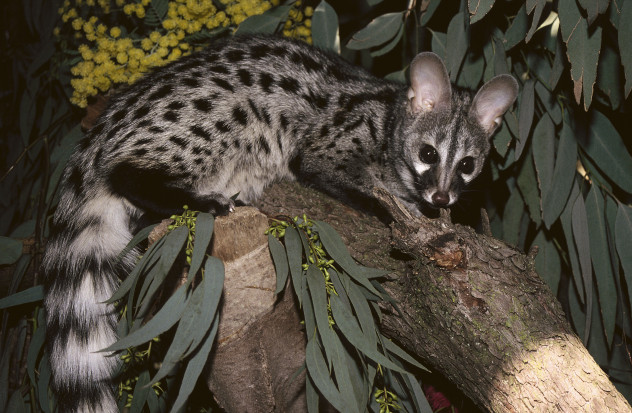
The genet is a small, cat-like animal native to north Africa. They’re traditionally solitary animals, and although their territories can occasionally overlap, they spend most of their time alone. This isn’t the case for one particular genet that’s been spotted in South Africa’s Hluhlwe-iMfolozi Park, not only making some unlikely friends, but going joyriding on his back every night.
Cameras are set up throughout the park to monitor the population of black rhinos, but they caught something odd in the process. One of the local genets has apparently taken to riding around on the backs of the large herbivores that it shares its territory with, and no one knows why. The genet doesn’t seem to prefer the company of any one rhino; it’s been seen riding around on different rhinos and buffaloes alike, and it doesn’t seem to be trying to get anywhere in particular, either. There are plenty of examples of birds landing on the big, hoofed animals, but there’s usually an obvious purpose to it—the birds are getting a free meal while their mount is getting the gnats picked off. The genet doesn’t seem to be doing it for any particular reason save perhaps the thrill of the ride.
3 Crocodile Tears
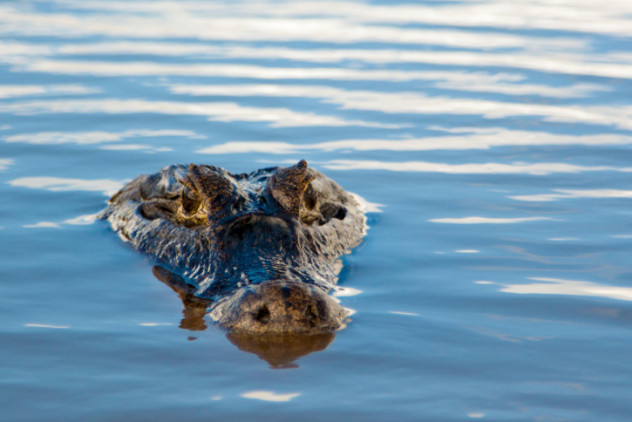
The whole idea of crocodile tears is pretty bizarre. Lore has long held that crocodiles cry when they eat, presumably because they feel bad for killing another animal. It’s a phrase that’s been used throughout literature to refer to insincere expressions of emotion. The earliest reference to the phenomenon is thought to come from a 1400s text called The Voyage and Travel of Sir John Mandeville, which discusses crocodiles and their tendency to cry as they eat humans.
The idea of crocodile tears as scientific fact has been incredibly hard to prove, as most crocodiles aren’t the easiest animals to study up close and also tend to eat in the water. Dismissed as a myth for a long time, the nonexistence of crocodile tears seemed to be confirmed in a questionable study conducted in the last century in which a researcher attempted to see if he could get a crocodile to cry by rubbing onions in its eyes. It didn’t cry.
It’s only been fairly recently that University of Florida zoologists studying crocodile cousins—alligators and caimans—have found that it’s not a myth at all, and they really do cry while they’re eating. They’re just not sure why.
It’s been generally accepted that it’s not an emotional response but rather a physiological phenomenon. The tears might be caused by the sounds that the animals make while they’re eating, air passing through the chambers in their skulls, or the pressure that’s needed to bite through their prey. It could also be a defensive mechanism, like our own tears, and that their eyes are producing tears as a way of protecting the eye during the fighting that goes on while they’re catching and holding their prey.
A definitive explanation might be reached with more research, but there’s one massive problem in the way. In order to get a good look at what’s going on, someone needs to train crocodiles to feed on land. And since they’re killing machines with lightning-fast jaws and deadly teeth, no one’s volunteered just yet.
2 Sloths Trek To The Toilet
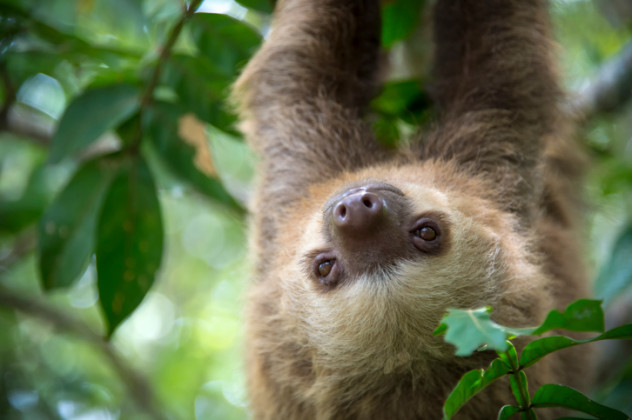
When you think of the sloth, there’s pretty much nothing about the animal that suggests it’s willing to put any kind of effort into anything. Except, researchers have found, pooping.
Most of the sloth’s life is spent in the treetops. It’s where the food is, it’s where they sleep, and it’s the safest place for the slow-moving creatures. But once a week, a sloth will make the slow, laborious journey to the ground in order to poop. Once it’s finished, it’ll head back up into the trees. No one’s sure why they go through all the trouble of heading down to the ground; not only does it take a lot of energy, but it’s not the safest activity, either. It would be a lot easier just to stay in the trees, out of the reach of predators on the ground, and do what they need to do.
There’s one main theory about why they do this, and it has to do with the bugs that live in their fur. Sloth fur is pretty disgusting, and it’s full of sloth moths. Researchers have suggested that the sloths make the long trip to the ground so that the moths can lay their eggs in the poop, and then, once the bugs hatch, they can head back up to the sloth that most likely hasn’t wandered too far away.
The problem with that theory comes when you’re trying to figure out just what good this is doing the sloth. There hasn’t been any proof discovered to indicate that the sloths are getting any benefits out of being home for a lot of bugs. The moths foster a habitat for algae that covers the sloths’ fur, but there doesn’t seem to be any real benefit in that, either.
1 Female Elephant Bullies
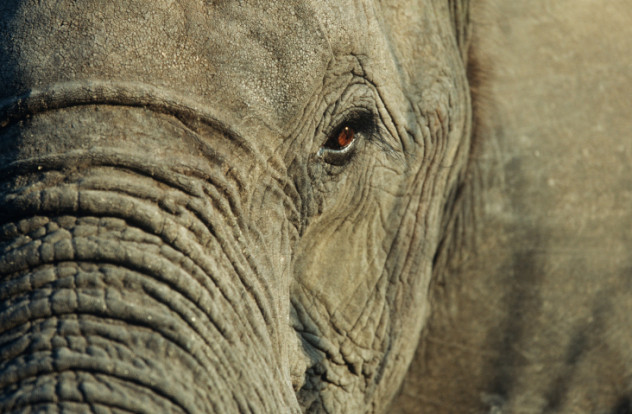
There are few groups thought to be as cooperative as elephants. They help raise each others’ young, they protect each other, and they mourn each other when they die. But recently, more observation into the behavior of elephants—particularly female elephants—has suggested that things aren’t all rosy-colored at the watering hole, and researchers aren’t sure why.
In 2013, researchers were staking out a watering hole that was frequented by several family groups of elephants, but behavior at this watering hole was far from what scientists have come to expect from elephant family groups in the wild.
While high-ranking females would go out of their way to help other females or help their babies when they got themselves into trouble, they were also going out of their way to block specific females, seemingly chosen at random, from getting to the watering hole. They were going so far as to slap them around and shove their babies out of the way. The behavior was so pronounced that some females were more interested in keeping their companions and babies away from the water than they were in drinking for themselves. It got so bad, continuing day after day, that researchers watched the ostracized females and their young grow steadily weaker and weaker.
It was a far cry from the extended family support system that’s often observed in elephant groups. Looking out for each other only makes sense. After all, it’s how the group survives into the next generation. Why exactly some of the female elephants have chosen very specifically to target other members of their family group is not known. It could be a population density factor or access to food and water, but other studies have indicated that elephants have no problem sharing with other species.








